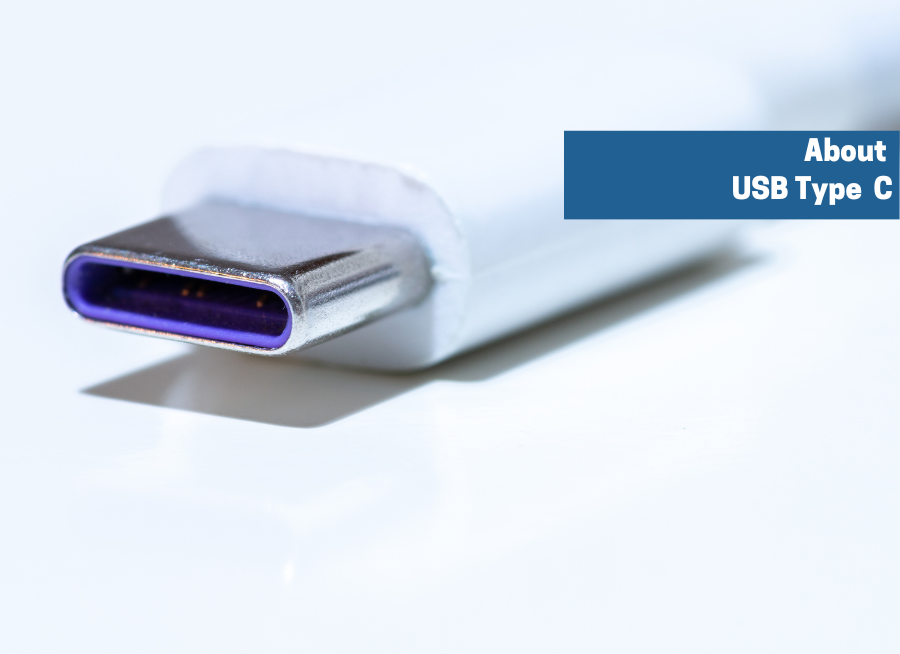About USB Type-C

Something happened to USB ports on new smartphones, laptops and tablets from 2019 onwards: the older, rectangular (USB Type-A) connector aperture was replaced by a distinctly smaller, oval slot. Unlike the previous port, it didn’t matter which way up or down the connector was inserted. This was the now-ubiquitous USB Type-C (usually shortened to ‘USB-C’).
However, there’s more to USB-C than a change of shape. Here’s a quick guide.
What is USB Type-C?
USB-C refers to its physical design, and it includes the connector end you can’t insert “upside down.” Remember early USB connectors, s? The had older USB ports you had to plug in facing up, like those for digital cameras and gaming device, known as USB-A, the USB-A connector had to be the in the right position.
USB-C supports USB 3, USB 4, and even Thunderbolt technology.
Different USB connectors from earlier iterations of the USB standard won’t fit the new design. In effect, the USB-C port and connector eliminated at a stroke one of the key annoyances of the earlier profile, where connectors could only be inserted the ‘right’ way (the new port is similar to Apple’s symmetrical Lightning connector).
Beneath appearances, however, potent new technology has been packed into the USB-C standard, including Thunderbolt and USB Power Delivery (PD) (more on both later).
A prominent new feature is the speed of data transfer: at 10GBS, it’s double that of the 5Gbps delivered by its predecessors (USB 3.0 and USB 3.1). Devices that support this new functionality will bear identifying labels indicating their compatibility. Look for USB 3.1 Rev 2, USB 3.1 Gen 2, SuperSpeed USB 10Gbps, or SuperSpeed.
If you see ‘USB 3.2 Gen 2X2’, you’re looking at a device that supports two streams of 10GBS data, taking the rate of data delivery to an epic 20GBS (this functionality is still relatively rare, though it seems likely to catch on).
Crucially, to get the fastest of the new uber-fast data delivery rates, good-quality cables are essential. Look for the ‘SuperSpeed’ logo or the number 10, which signifies the new data transfer capability of 10GBS. Check the offerings available at EuroNetwork for further details.
What is Power Delivery (PD)?
This tells you that USB Type-C supports Thunderbolt 3’s gutsy data transfer tech. If your laptop or desktop supports it, you can look forward to data speeds as high (theoretically at least) as 40GBS. This is over 3,000 times as fast as the original USB 1 standard of 12MBS and four times swifter than USB 3.1.
This effectively means that good-quality video data can be delivered through USB-C via its ‘Alternate Mode’ (or ‘Alt Mode’) feature: adapters that can output video data from a USB-C port into a range of video connectors on TVs, projectors and displays (e.g. HDMI, VGA, DisplayPort).
At 100 watts, Power Delivery dwarfs a USB 2.0 port’s comparatively feeble 2.5 watts (which is okay for charging phones or tablets but not for much else) and makes the USB 3.1 port’s 15 watts seem anaemic.
What products support USB-C?
Provided that you invest in the appropriate adapters, a device with new USB-C ports can work on pretty well all devices with the older USB standards. However, bear in mind that a number of tablets and smartphones won’t support USB-C’s ‘Alt Mode video’ capability.

